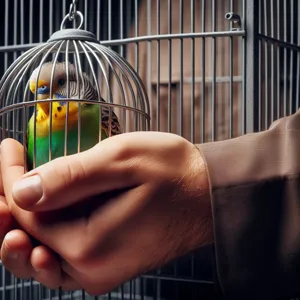Choosing the right car is more than just selecting a mode of transportation; it’s about finding a perfect match that aligns with your lifestyle, needs, and personal style.
With a plethora of options available, from sleek sedans to rugged SUVs, the decision can often feel overwhelming. Whether you’re a busy professional commuting to the office, a family-oriented individual juggling school runs and weekend adventures, or an eco-conscious driver seeking a sustainable vehicle, the right car can significantly enhance your daily experience. In this comprehensive guide, we’ll explore the essential factors to consider when selecting a car, including your budget, lifestyle requirements, and the latest automotive innovations. By the end of this journey, you’ll be equipped with the knowledge and confidence to make an informed decision that suits your unique way of life. Let’s dive in and find the perfect match for you!
1. Understanding Your Lifestyle Needs

When it comes to choosing the right car, understanding your lifestyle needs is the essential first step in the decision-making process. Your vehicle should not only be a means of transportation but also a reflection of your daily life, preferences, and future plans. Start by assessing your daily routines: Do you commute to work in the city, or do you often embark on weekend road trips? If your weekdays involve navigating bustling urban streets, a compact car or a hybrid might suit you best, offering maneuverability and fuel efficiency.
Consider the size of your household, too. Families often require larger vehicles with ample space for passengers and cargo, making SUVs or minivans ideal choices. If you have active hobbies, like biking or camping, think about additional storage needs and whether your vehicle can accommodate your gear.
Don’t forget to factor in your budget—both for the purchase and for ongoing expenses such as insurance, fuel, and maintenance. A luxury SUV might be appealing, but if it stretches your finances too thin, it could lead to buyer’s remorse.
Lastly, envision how long you plan to keep your vehicle. If you see yourself making long-term memories with your car, investing in reliability and safety features becomes paramount. By thoroughly evaluating these aspects of your lifestyle, you can hone in on the perfect vehicle that meets your needs, ensuring that your purchase enhances your daily life rather than complicates it.
2. Setting Your Budget: How Much Can You Afford?
When it comes to selecting the perfect car that aligns with your lifestyle, setting a budget is a crucial first step. Without a clear understanding of your financial boundaries, you risk falling in love with a vehicle that may ultimately strain your wallet. Start by evaluating your overall financial situation, including your income, existing expenses, and any savings goals you may have. This holistic view will help you determine how much you can realistically allocate toward a vehicle without compromising your other financial responsibilities.
As you establish your budget, consider not only the purchase price of the car but also the ongoing costs associated with ownership. Factor in expenses such as insurance premiums, fuel costs, regular maintenance, and potential repairs. It’s wise to consult online calculators or financial advisors to get an accurate estimate of how these costs will affect your monthly budget.
Additionally, remember to account for financing options if you’re not buying outright. Interest rates, loan terms, and down payment amounts can significantly impact your monthly payments. Research various financing routes, including dealerships, banks, and credit unions, to find the best option that suits your financial situation.
Lastly, don’t forget about future considerations. If you anticipate changes in your lifestyle—such as a growing family, a new job requiring a longer commute, or plans for travel—make sure your budget allows for flexibility. Setting a budget isn’t just about today’s needs; it’s about ensuring your vehicle continues to serve you well for years to come. By carefully assessing your financial landscape and projecting future needs, you’ll be well-equipped to make a choice that not only fits your immediate desires but also supports your overall lifestyle for the long haul.
3. Types of Cars: Sedans, SUVs, Trucks, and More

When it comes to selecting a vehicle that complements your lifestyle, understanding the various types of cars available is crucial. Each category offers unique advantages tailored to specific needs, preferences, and activities.
**Sedans** are often the go-to choice for those seeking a balance of comfort, efficiency, and style. With their sleek designs and spacious interiors, sedans are perfect for daily commutes, family outings, or business trips. They tend to offer better fuel economy compared to larger vehicles, making them an ideal option for urban dwellers who navigate city traffic regularly. Think of sedans as the versatile workhorse of the automotive world, blending practicality with a touch of elegance.
**SUVs (Sport Utility Vehicles)**, on the other hand, have surged in popularity thanks to their spaciousness and robust capabilities. If you have a large family, enjoy outdoor adventures, or need extra cargo space for sports equipment or camping gear, an SUV may be your best bet. With higher ground clearance and all-wheel-drive options, SUVs can navigate various terrains, making them suitable for everything from city streets to mountain trails. Plus, many modern SUVs are equipped with advanced technology and safety features that enhance both comfort and peace of mind.
For those who crave ruggedness and utility, **trucks** provide an unmatched blend of power and versatility. Ideal for individuals who require heavy towing capacity or need to transport equipment for work, trucks are the perfect companion for anyone who enjoys outdoor activities like camping, boating, or off-roading. Their open bed design allows for easy loading and unloading, making them indispensable for weekend warriors and contractors alike.
**Hatchbacks** and **coupes** offer a sportier alternative for drivers who prioritize style and agility. Hatchbacks, with their compact size and versatility, are great for navigating crowded urban environments while still providing ample cargo space. Coupes, on the other hand, are designed for those who desire a more exhilarating driving experience, often featuring sleek lines and a focus on performance.
Ultimately, the key to finding your perfect match lies in assessing your daily routines, hobbies, and future plans. By exploring the distinct characteristics of sedans, SUVs, trucks, and other vehicle types, you’re one step closer to making an informed decision that aligns with your lifestyle. Remember, the right car should not only meet your practical needs but also resonate with your personal style and preferences.
4. Evaluating Fuel Efficiency and Environmental Impact
When it comes to selecting a car that aligns with your lifestyle, evaluating fuel efficiency and environmental impact is more crucial than ever. In an era where climate consciousness is on the rise, understanding how your vehicle contributes to both your wallet and the planet can guide you toward a smarter choice.
Fuel efficiency, often measured in miles per gallon (MPG), is a key consideration. A vehicle that excels in fuel economy not only reduces your trips to the gas station but also minimizes your overall carbon footprint. For city dwellers who navigate stop-and-go traffic or suburban residents with long commutes, choosing a car with higher MPG ratings can lead to significant savings over time. Consider models with hybrid or electric options, which not only offer remarkable fuel efficiency but also produce fewer emissions compared to traditional gasoline engines.
But fuel efficiency is just one side of the equation. The environmental impact of your vehicle extends beyond just how far it can go on a gallon of gas. Factors such as greenhouse gas emissions, the materials used in manufacturing, and the sustainability of the supply chain all play a role in determining a car’s overall ecological footprint. Newer models often come equipped with advanced technologies designed to reduce emissions, so it’s beneficial to research the Environmental Protection Agency (EPA) ratings and certifications that can provide insights into a car’s environmental performance.
As you weigh your options, think about your driving habits and environmental values. If you frequently embark on long road trips, a fuel-efficient gasoline car might serve your needs well. Conversely, if you’re primarily commuting short distances around town, an electric vehicle could be the perfect fit, allowing you to enjoy lower operating costs while contributing to a cleaner environment.
Ultimately, evaluating fuel efficiency and environmental impact is about making an informed decision that reflects not only your practical needs but also your commitment to sustainability. By prioritizing these factors, you can find a vehicle that not only enhances your lifestyle but also aligns with your values, ensuring that you drive away with a sense of responsibility and pride.
5. Safety Features to Consider in Your Next Vehicle

When it comes to choosing the right car for your lifestyle, safety should always be a top priority. Modern vehicles are equipped with a plethora of advanced safety features designed to protect you and your passengers, but navigating through the myriad of options can be overwhelming. Here’s a closer look at the essential safety features to consider when selecting your next vehicle.
**1. Advanced Driver Assistance Systems (ADAS):** These systems have revolutionized vehicle safety. Features such as adaptive cruise control, lane-keeping assist, and automatic emergency braking actively help prevent accidents by monitoring your surroundings and providing real-time alerts or interventions. For those who often navigate busy city streets or long highway drives, these technologies can significantly reduce the likelihood of collisions.
**2. Airbag Systems:** While nearly all vehicles come with standard airbags, the configuration and number can vary. Look for cars equipped with front, side, curtain, and knee airbags to ensure comprehensive protection in the event of a crash. Some newer models even include pedestrian airbags that deploy to cushion a pedestrian in the event of a collision, adding another layer of safety.
**3. Traction and Stability Control:** These features help maintain vehicle control in adverse conditions, such as rain or snow. Traction control prevents wheelspin during acceleration, while stability control helps you maintain control during sharp turns or sudden maneuvers. For those living in areas with unpredictable weather or rough terrain, these systems are invaluable.
**4. Blind Spot Monitoring:** This feature uses sensors to detect vehicles in your blind spots, alerting you when it’s unsafe to change lanes. It’s especially helpful for larger vehicles with significant blind spots and can help prevent dangerous lane-change accidents.
**5. Rearview Cameras and Parking Sensors:** Maneuvering in tight spaces can be challenging, making rearview cameras and parking sensors essential. These tools provide a clear view of what’s behind you and alert you to obstacles you may not see, making parking and reversing much safer.
**6. Crash Test Ratings:** Always check the crash test ratings from reputable sources such as the National Highway Traffic Safety Administration (NHTSA) or the Insurance Institute for Highway Safety (IIHS). These ratings consider various factors and can give you a clearer picture of how well a vehicle performs during a crash.
**7. Child Safety Features:** If you have young passengers, you’ll want to prioritize vehicles with child safety features such as LATCH systems for car seats and rear-door child safety locks. These features ensure that your little ones are secure and safe on every journey.
Choosing a vehicle with robust safety features is an investment in peace of mind. By carefully considering these elements, you can ensure that your next car not only meets your lifestyle needs but also prioritizes the safety of you and your loved ones on the road. Remember, a safe car is a smart car, and making informed decisions will lead you to your perfect match.
6. The Importance of Reliability and Maintenance Costs
When choosing a car that aligns with your lifestyle, reliability and maintenance costs should be at the forefront of your decision-making process. Imagine the frustration of being stranded on the side of the road due to unexpected breakdowns or enduring constant trips to the mechanic for repairs. A reliable vehicle not only provides peace of mind but also ensures that you can depend on it for your daily commutes, weekend getaways, or family outings without the shadow of uncertainty looming overhead.
Reliability goes hand in hand with the reputation of the make and model you’re considering. Some brands are renowned for their durability and longevity, often backed by customer testimonials and industry awards. Researching these insights can help you identify which vehicles consistently perform well over time, reducing the likelihood of unexpected repairs.
Equally important are maintenance costs, which can significantly impact your overall budget. While a car may have a lower purchase price, it’s essential to consider the long-term expenses associated with it. Some vehicles have higher maintenance costs due to specialized parts or service requirements, while others offer a more economical ownership experience. Reviewing factors such as the frequency of necessary maintenance, the average cost of parts, and the availability of service centers can help you make an informed decision.
In summary, prioritizing reliability and understanding maintenance costs will not only enhance your driving experience but also ensure that your vehicle complements your lifestyle in a practical and sustainable way. By doing your homework and choosing wisely, you can enjoy the freedom of the open road without the burden of constant repairs or unforeseen expenses.
7. New vs. Used: Pros and Cons

When it comes to choosing between a new or used car, understanding the pros and cons of each option is essential in making an informed decision that aligns with your lifestyle and budget.
**New Cars: The Allure of Freshness**
Opting for a new car often means stepping into the latest technology, safety features, and design aesthetics. These vehicles come with the peace of mind that only a manufacturer’s warranty can provide, shielding you from unexpected repair costs for the initial years of ownership. Additionally, new cars typically boast higher fuel efficiency and lower emissions, making them more environmentally friendly. However, this comes at a cost. New cars depreciate rapidly, losing a significant portion of their value as soon as they leave the dealership. Moreover, the higher price tag can strain your budget or limit your options in terms of financing.
**Used Cars: The Value Proposition**
On the flip side, used cars are often seen as the savvy shopper’s choice. They present an opportunity to acquire a well-maintained vehicle at a fraction of the new car price. The depreciation curve has already hit its steepest decline, which can mean better value for your money. Plus, there is a wider variety of models available, allowing you to choose from several features and specifications that may be out of reach when buying new. However, purchasing a used vehicle carries inherent risks; these cars may come with hidden issues, have less warranty coverage, and may lack the latest safety technology. Conducting thorough inspections and obtaining vehicle history reports is crucial to ensuring you’re making a sound investment.
Ultimately, the decision between new and used hinges on your financial situation, driving habits, and personal preferences. By weighing these pros and cons, you can find the perfect car that not only fits your lifestyle but also complements your budgetary constraints. Whether you’re driving a brand-new model off the lot or enjoying the charm of a pre-owned classic, the right choice will enhance your driving experience and meet your everyday needs.
8. Technology Features: Infotainment and Connectivity
In today’s fast-paced world, a car is no longer just a mode of transportation; it’s an extension of our digital lives. When choosing the right vehicle for your lifestyle, it’s crucial to consider the technology features, particularly infotainment and connectivity options. These elements can significantly enhance your driving experience, offering not just entertainment, but also convenience and safety.
Imagine sliding into the driver’s seat of a car that seamlessly integrates with your smartphone, allowing you to access navigation apps, stream music, and even send messages without skipping a beat. Modern infotainment systems are designed to make connectivity effortless, with features like Apple CarPlay and Android Auto that mirror your phone’s interface right onto the vehicle’s display. This means your favorite apps are just a tap away, making every journey enjoyable, whether it’s a daily commute or a weekend getaway.
Moreover, consider the audio experience that your chosen vehicle offers. High-quality sound systems from brands like Bose or Bang & Olufsen can transform your daily drives into a concert-like experience. Whether you’re jamming to your favorite playlist or catching up on podcasts, the right audio setup can elevate your time behind the wheel.
Don’t forget about the importance of hands-free capabilities. Voice recognition technology allows you to control navigation, calls, and media without taking your hands off the wheel or your eyes off the road. This not only enhances convenience but also contributes to safer driving practices.
Lastly, check for features like built-in Wi-Fi hotspots or advanced navigation systems that provide real-time traffic updates. These technologies can save you time and keep you connected, no matter where the road takes you.
When evaluating potential vehicles, take the time to explore their technology features thoroughly. A well-integrated infotainment and connectivity system tailored to your lifestyle can make all the difference, ensuring that your drive is as enjoyable as it is practical. After all, in a world where technology shapes our daily routines, why shouldn’t our cars keep pace?
9. Test Driving: What to Look For
When it comes to finding your perfect car match, test driving is an essential step that should never be overlooked. This is your chance to experience firsthand how a vehicle aligns with your lifestyle and needs. As you slide into the driver’s seat, here’s what to pay attention to during your test drive to ensure you’re making the right decision.
**Comfort and Ergonomics:** Start by adjusting the seat and steering wheel to find a comfortable driving position. Test how easy it is to reach the pedals and controls. A car that feels right physically will make a world of difference on long drives or during daily commutes. Don’t hesitate to check the interior space too—ensure that there’s ample legroom for passengers and cargo.
**Visibility and Handling:** Take a moment to assess the visibility from the driver’s seat. Can you see clearly out the front, sides, and rear? Good visibility can enhance your confidence on the road. Next, find a stretch of road where you can test the handling. Notice how the car responds to steering inputs, whether it feels stable on turns, and how it handles bumps or potholes. A car that feels nimble and composed will make every journey more enjoyable.
**Acceleration and Braking:** Pay attention to the vehicle’s acceleration as you merge onto highways or navigate through city streets. A responsive engine can make daily driving more pleasant. Similarly, test the brakes by coming to a controlled stop. Feeling the braking power and responsiveness is crucial, especially in a city-driving scenario where stop-and-go traffic is common.
**Technology and Features:** Familiarize yourself with the car’s technology, from infotainment systems to safety features. Are the controls intuitive? Can you easily connect your smartphone? Look for features that enhance your driving experience, such as adaptive cruise control, lane-keeping assist, or even a premium sound system. These conveniences can significantly impact your enjoyment of the vehicle.
**Noise Levels:** Finally, pay attention to the noise levels inside the car. A serene cabin can greatly enhance your driving experience, especially on longer trips. Notice whether road noise, wind noise, or engine noise intrudes during your drive. A quieter ride can make your time on the road far more pleasant.
By being mindful of these elements during your test drive, you’ll be better equipped to determine if a car truly aligns with your lifestyle. Remember, this is not just a vehicle; it’s a part of your daily life, and finding one that complements your needs will make every journey a joy.
10. Researching Reviews and Ratings
When it comes to choosing the right car for your lifestyle, diving into the world of reviews and ratings is essential. In today’s digital age, the wealth of information available at your fingertips can feel overwhelming, but it is also a treasure trove of insights that can guide your decision-making process. Start by exploring automotive websites and forums where experts and everyday drivers alike share their experiences with various models. Look for detailed reviews that cover aspects such as reliability, fuel efficiency, comfort, and performance.
Pay attention to the ratings provided by trusted organizations, such as Consumer Reports and J.D. Power, as these can give you a clear picture of how a vehicle ranks against its competitors. Don’t forget to consider the experiences of other drivers, too—customer reviews can reveal common issues that may not be highlighted in professional evaluations.
Additionally, seek out video reviews on platforms like YouTube, where you can see cars in action, hear firsthand accounts of their pros and cons, and even get a sense of the interior features and driving experience. By synthesizing information from multiple sources, you can form a well-rounded view of each vehicle and make an informed choice that aligns with your lifestyle needs.
Whether you’re after a fuel-efficient commuter car, a spacious family SUV, or a rugged off-road vehicle, thorough research will empower you to find the perfect match that not only meets your practical requirements but also enhances your driving experience. Remember, investing time in understanding what others have to say about your potential new ride could save you from costly mistakes in the long run.
11. Financing Options: Leasing vs. Buying
When it comes to acquiring your ideal vehicle, understanding the financing options available to you is crucial. Two of the most common routes are leasing and buying, each with distinct advantages and considerations that cater to different lifestyles and financial situations.
**Leasing** is akin to renting a car for an extended period, typically two to three years. It often comes with lower monthly payments compared to buying, allowing you to drive a newer model with the latest features without the heftier price tag. This option is particularly appealing for those who enjoy the thrill of driving a new vehicle every few years. Additionally, most leases cover warranty maintenance, which means fewer out-of-pocket expenses for repairs. However, it’s important to note that leasing comes with mileage restrictions—usually around 10,000 to 15,000 miles per year—so if you have a long commute or enjoy road trips, this could be a limiting factor. At the end of the lease term, you’ll need to return the car, and while you can purchase it, you may not have equity in the vehicle as you would if you owned it.
On the other hand, **buying** a car means you’re investing in an asset that you can modify, drive as much as you want, and keep for as long as you desire. Once the loan is paid off, you own the car outright, which can be a significant financial benefit. This option is ideal for those who drive frequently or for longer distances, as there are no mileage limits to worry about. However, buying typically requires a larger down payment and higher monthly payments, which can strain your budget. Additionally, the responsibility for maintenance and repairs falls solely on you, so it’s wise to factor in these potential costs.
Ultimately, the choice between leasing and buying depends on your personal preferences, lifestyle, and financial situation. If you crave flexibility and the latest technology, leasing might be your best bet. Conversely, if you prefer long-term ownership and freedom from mileage restrictions, buying could be the way to go. By carefully considering these financing options, you’ll be better equipped to choose a vehicle that perfectly aligns with your lifestyle and budget.
12. The Role of Insurance in Your Car Decision
When selecting the right car for your lifestyle, it’s easy to get swept up in the excitement of sleek designs, powerful engines, and the latest technology features. However, one crucial aspect that often gets overlooked is the role of insurance in your car decision. Understanding how insurance impacts your overall ownership experience can save you both money and stress in the long run.
First and foremost, different vehicles come with varying insurance costs. Luxury cars, sports models, and SUVs tend to carry higher premiums due to their repair costs, safety ratings, and theft rates. Before making a purchase, it’s wise to get insurance quotes for the models you’re considering. This will give you a clearer picture of how much you’ll be spending monthly or annually, allowing you to factor this into your budget.
Moreover, the type of insurance coverage you choose can also influence your decision. If you’re considering a new car, you might want to opt for comprehensive coverage, which protects against a wide range of risks. On the other hand, if you’re eyeing a used vehicle, you might decide to go with a more basic policy, especially if the car’s value has depreciated significantly.
Additionally, your driving habits and lifestyle should inform your insurance choice. If you’re a commuter who racks up miles daily, or you frequently drive in urban areas with heavy traffic, your insurance needs will differ from someone who uses their car sparingly or primarily for weekend getaways. Be sure to consider how your lifestyle affects your risk profile and, consequently, your insurance rates.
Finally, remember that some insurers offer discounts for certain safety features, such as anti-lock brakes, airbags, and advanced driver-assistance systems. If you’re leaning towards a car equipped with these technologies, you may benefit from lower premiums, making it a financially savvy choice.
In summary, factoring in insurance when choosing a car is essential for making an informed decision that aligns with your lifestyle and budget. By weighing the insurance implications alongside your preferences for style, functionality, and performance, you can ensure that your chosen vehicle not only fits your needs but also keeps you financially secure on the road ahead.
13. Considering Future Needs: Family, Travel, and Lifestyle Changes
When selecting a vehicle, it’s easy to get caught up in the excitement of the moment—sleek designs, powerful engines, and cutting-edge technology can make any car seem irresistible. However, a crucial aspect of your decision should revolve around your future needs. Life is dynamic, and your vehicle should adapt to your evolving circumstances, whether that means a growing family, frequent travel, or shifts in lifestyle.
If you’re planning to start a family, think about the space you’ll require. Will you need extra seating for carpooling, or room for a stroller and all the accompanying baby gear? SUVs and minivans often shine in these scenarios, offering ample cargo space and versatility. Additionally, safety features should be a top priority; look for vehicles equipped with advanced driver-assistance systems to keep your loved ones secure.
For the wanderlust-filled traveler, your choice of car can significantly impact your adventures. Consider how often you plan to hit the road and the type of journeys you’ll embark on. A fuel-efficient sedan may suffice for city commutes, but if long road trips or off-road explorations are on the horizon, a more robust vehicle with better handling and storage capacity will better suit your lifestyle. Features like roof racks for gear or towing capabilities for trailers can open up a world of possibilities for your explorations.
Lifestyle changes can also dictate your vehicle needs. If your job requires frequent travel or your hobbies include outdoor activities, a car that complements these facets of your life is essential. A versatile crossover might be ideal for balancing daily commutes with weekend getaways, while a compact car can be perfect for urban dwellers who value maneuverability and parking ease.
Ultimately, when choosing a car, take a moment to envision your future. While it’s tempting to focus on the present, considering how your needs may change can save you from buyer’s remorse down the line. By factoring in family dynamics, travel habits, and lifestyle changes, you can ensure that your vehicle is not just a means of transportation, but a reliable companion that grows alongside you.
14. Finalizing Your Decision: Making the Right Choice
Finalizing your decision is a pivotal moment in your car-buying journey, and it requires careful consideration to ensure that the vehicle you choose aligns perfectly with your lifestyle and needs. Once you’ve narrowed down your options, it’s time to weigh the pros and cons of each choice. Start by revisiting your initial criteria: Do you need a spacious family car for road trips, or a compact vehicle that can navigate city streets with ease?
Take the time to visit dealerships and schedule test drives. The feel of a car can significantly influence your decision—how it handles on the road, the comfort of the seating, and the accessibility of controls can all play a role in your satisfaction. Pay attention to the details during your test drive: Is the visibility adequate? Is the cabin noise level acceptable?
Additionally, consider the financial aspects of your choice. Beyond the sticker price, think about fuel efficiency, insurance costs, and potential maintenance expenses. A car that seems affordable upfront might become a budget buster down the line if it requires frequent repairs or consumes more fuel than anticipated.
Lastly, trust your instincts. After conducting thorough research and experiencing the vehicles firsthand, listen to your gut feeling. The right car should not only meet your practical needs but also resonate with you on an emotional level. Whether it’s the thrill of driving a sporty coupe or the peace of mind that comes with a reliable family SUV, your vehicle choice should enhance your lifestyle, not complicate it. Take a deep breath, finalize your decision, and prepare to hit the road in your perfect match!
15. Tips for Negotiating with Dealers and Sellers
Negotiating with car dealers and private sellers can feel daunting, but with the right strategies, you can secure a deal that aligns with your budget and needs. First and foremost, do your homework. Research the market value of the car you’re interested in, considering factors such as its make, model, year, mileage, and condition. Websites like Kelley Blue Book and Edmunds can provide invaluable insights into fair pricing, equipping you with the knowledge to negotiate confidently.
When you arrive at the dealership or meet with a seller, be prepared to walk away if the terms are not favorable. This mindset is crucial; it not only shows that you are serious about getting a good deal but also empowers you during the negotiation process. Start with a lower offer based on your research, and be ready for counteroffers. Remember, negotiation is a dialogue, not a confrontation—maintain a polite and respectful attitude, even if the discussions become tense.
Additionally, consider the timing of your purchase. Dealers often have monthly and quarterly quotas, so shopping at the end of these periods can work to your advantage, as they may be more willing to negotiate in order to meet their sales targets. Don’t shy away from discussing financing options either. Sometimes dealers will offer better terms if you’re willing to finance through them, while other times, securing pre-approved financing from a bank can strengthen your negotiating position.
Finally, don’t overlook the importance of vehicle history reports if you’re buying used. Ask for this documentation upfront; it can reveal potential issues that may not be immediately visible, granting you leverage in the negotiation process. By arming yourself with knowledge and confidence, you’ll be well on your way to striking a deal that feels right for you and your lifestyle.
In conclusion, finding the perfect car that aligns with your lifestyle is a fulfilling journey that goes beyond mere aesthetics or brand loyalty. By assessing your daily needs, budget, and personal preferences, you can make an informed decision that enhances your driving experience and complements your life. Whether you’re a busy parent, a city commuter, or an adventurous road-tripper, there’s a vehicle out there waiting to become a part of your story. Remember, the right car should feel like an extension of yourself, providing comfort, reliability, and joy on every journey. We hope this guide has equipped you with the insights you need to embark on this exciting quest. Happy car hunting!












